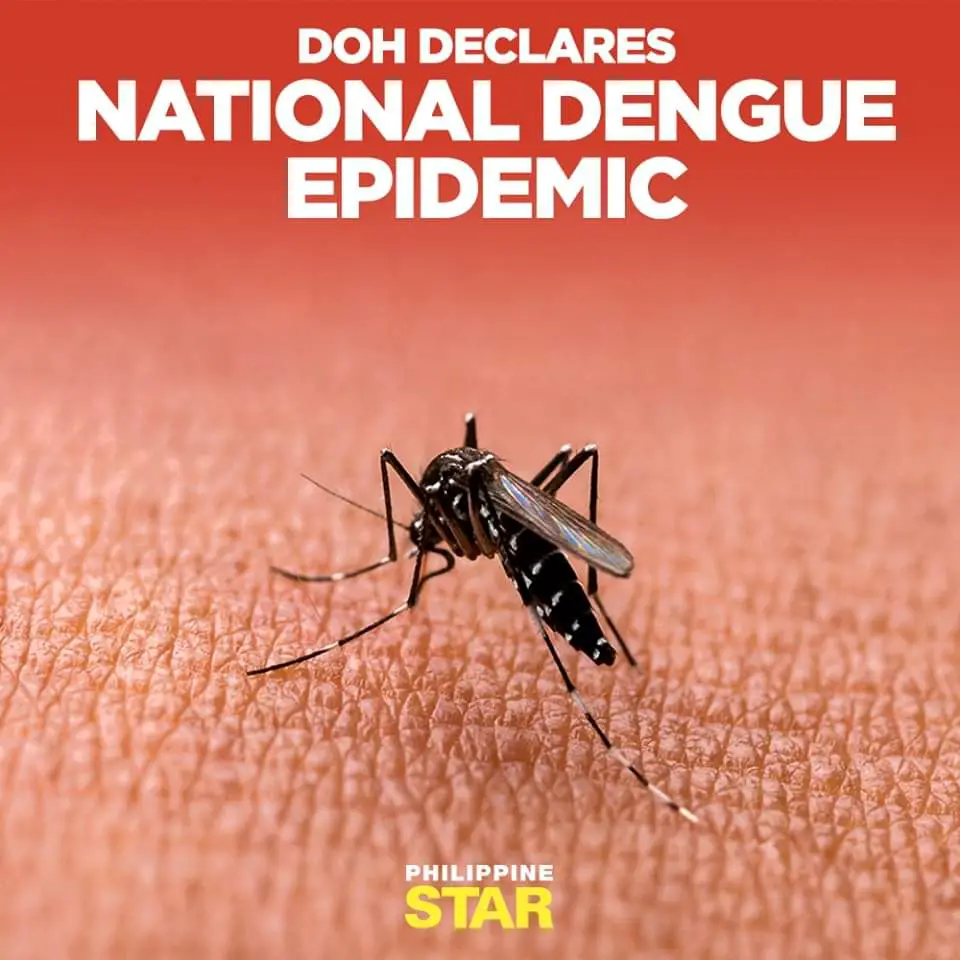Our country, because of its natural tropical climate, is home to a lot of mosquitoes. Furthermore, it is a known fact that mosquitoes have the ability to carry many different deadly diseases like Dengue and Malaria.

Every year, the Department of Health (DOH) makes their tally of the number of incidents that Dengue hit the Filipinos. Last month, the DOH sent the alert that the country had a national dengue alert.
Read: No Vaccination, No Enrollment Policy – Suggested by DOH
This time around, it’s not just an alert—as the DOH already sent out a national dengue epidemic to the citizens or the State.
As per reports from CNN Philippines, the DOH declared a national dengue epidemic because of the immediate increase of dengue cases that hit the country.
How many cases were recorded?
As per the DOH, the figure that they were able to figure in this situation is 98 percent more than the amount they recorded last year (2018).
Based on the data gathered by the DOH, there were at least 146,000 cases of Dengue with 622 deaths. This figure covers from January 2019 until the 20th of July.
Read: Rainy Season in the Philippines and How to be Safe
If you do the Math, in last month’s data of the DOH, there were 106,000 cases from the start of the year until mid-June of this year. A month after, that number spiked dramatically higher than the usual.
Which regions are affected?
The region that reported the most number of Dengue patients is the Western Visayas region. In that part of the country alone, the total number of patients are 23,330.
It is a high amount considering the fact that the Western Visayas region is not as condensed as the Luzon island.
Read: Universal Health Care Bill, Approved by Duterte
CALABARZON (Cavite Laguna Batangas Rizal and Quezon) comes next having a total of 16,515 cases of Dengue.
In these figures alone, we can definitely agree with the DOH that the national Dengue epidemic is real and that it should not be disregarded.
But that’s not all; the Zamboanga Peninsula reported a total of 12,317 Dengue cases, just a bit lower than what the CALABARZON region reported.
Following that is the SOCCKSARGEN (Central Mindanao) and the Northern Mindanao area having 11,083 and 11,455 cases, respectively.
What does these figures imply?
Basically, these numbers just allow health officials to draft their next move—and their next move? Well they declared a national Dengue epidemic.
Read: DOH: Adults are Also Prone to Measles
According to the health officials of each city and municipality, this national Dengue epidemic was alerted as a form of identification for authorities to see where response and action is required.
The nationwide Dengue alert
In a previous post, it was told by the DOH that it was the first (1st) time that the country ever experienced this. The reason for this is because the spike in the cases of Dengue reached an alarming figure and that it cannot be anymore contained.
Enrique Domingo, Department of Health (DOH) Undersecretary, said that they declare a national epidemic for it to be easier for their resources to respond. More so, he explained that this is because of the weather our country is having.
We say it’s an epidemic when half of the regions are affected. We call it a national epidemic and it makes it easier for us to mobilize resources. It’s definitely the water, especially now that we’re having rains. You have stagnant water, 2 to 3 days is enough for the life cycle of a mosquito.”
When would this alarming rate of Dengue cases be?
As per Domingo, this condition could continue until September because this is when the raining would gradually lessen. Then, in turn, mosquitoes would not be around anymore because stagnant waters won’t stick around most of the time.
Read: CONFIRMED – No Direct Deaths by Dengvaxia, DOH
Domingo advised the public that if any of the family members experience fevers that last anywhere from two (2) to three (3) days, they should immediately see and consult a doctor to have themselves checked.
Protecting yourselves and your family from this Dengue outbreak is not as complicated as it seems. Proper hygiene and appropriate storing of water is usually the key.
For the current national Dengue epidemic, however, Dengue patients who are already suffering just needs to be looked at by healthcare professionals to be given appropriate medication.
People who aren’t affected yet, on the other hand—it is always healthy to remember that prevention is better than cure.
Source/s: CNN Philippines